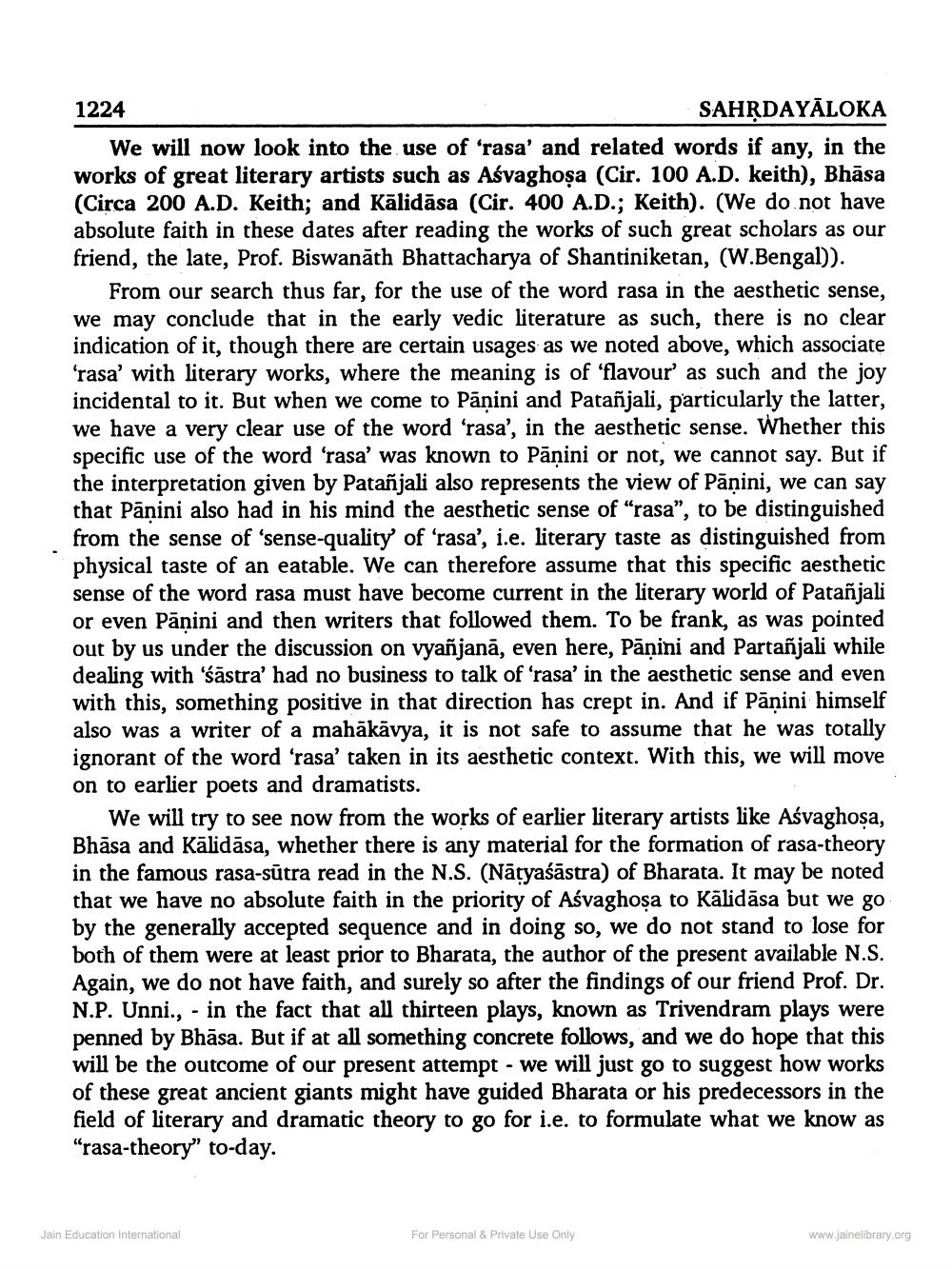________________
1224
SAHṚDAYĀLOKA
We will now look into the use of 'rasa' and related words if any, in the works of great literary artists such as Asvaghosa (Cir. 100 A.D. keith), Bhāsa (Circa 200 A.D. Keith; and Kālidāsa (Cir. 400 A.D.; Keith). (We do not have absolute faith in these dates after reading the works of such great scholars as our friend, the late, Prof. Biswanath Bhattacharya of Shantiniketan, (W.Bengal)).
From our search thus far, for the use of the word rasa in the aesthetic sense, we may conclude that in the early vedic literature as such, there is no clear indication of it, though there are certain usages as we noted above, which associate 'rasa' with literary works, where the meaning is of 'flavour' as such and the joy incidental to it. But when we come to Panini and Patanjali, particularly the latter, we have a very clear use of the word 'rasa', in the aesthetic sense. Whether this specific use of the word 'rasa' was known to Pāṇini or not, we cannot say. But if the interpretation given by Patanjali also represents the view of Panini, we can say that Panini also had in his mind the aesthetic sense of "rasa", to be distinguished from the sense of 'sense-quality' of 'rasa', i.e. literary taste as distinguished from physical taste of an eatable. We can therefore assume that this specific aesthetic sense of the word rasa must have become current in the literary world of Patanjali or even Panini and then writers that followed them. To be frank, as was pointed out by us under the discussion on vyañjanā, even here, Panini and Partañjali while dealing with 'sastra' had no business to talk of 'rasa' in the aesthetic sense and even with this, something positive in that direction has crept in. And if Panini himself also was a writer of a mahākāvya, it is not safe to assume that he was totally ignorant of the word 'rasa' taken in its aesthetic context. With this, we will move on to earlier poets and dramatists.
We will try to see now from the works of earlier literary artists like Aśvaghosa, Bhāsa and Kālidāsa, whether there is any material for the formation of rasa-theory in the famous rasa-sutra read in the N.S. (Natyaśāstra) of Bharata. It may be noted that we have no absolute faith in the priority of Asvaghosa to Kālidāsa but we go by the generally accepted sequence and in doing so, we do not stand to lose for both of them were at least prior to Bharata, the author of the present available N.S. Again, we do not have faith, and surely so after the findings of our friend Prof. Dr. N.P. Unni., in the fact that all thirteen plays, known as Trivendram plays were penned by Bhāsa. But if at all something concrete follows, and we do hope that this will be the outcome of our present attempt - we will just go to suggest how works of these great ancient giants might have guided Bharata or his predecessors in the field of literary and dramatic theory to go for i.e. to formulate what we know as "rasa-theory" to-day.
-
Jain Education International
For Personal & Private Use Only
www.jainelibrary.org




